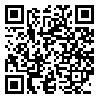Volume 6, Issue 1 (Continuously Updated 2023)
Func Disabil J 2023, 6(1): 0-0 |
Back to browse issues page
Download citation:
BibTeX | RIS | EndNote | Medlars | ProCite | Reference Manager | RefWorks
Send citation to:



BibTeX | RIS | EndNote | Medlars | ProCite | Reference Manager | RefWorks
Send citation to:
Moallemi M, Rahbar N, Ahadi M, Maarefvand M. The Effects of a Home Personal Computer-based Auditory Training Program on the Binaural Listening Skills of Children With Specific Learning Disability: A Protocol for a Randomized Clinical Trial. Func Disabil J 2023; 6 (1) : 255.1
URL: http://fdj.iums.ac.ir/article-1-219-en.html
URL: http://fdj.iums.ac.ir/article-1-219-en.html
1- Department of Audiology, Rehabilitation Research Center, School of Rehabilitation Sciences, Iran University of Medical Sciences, Tehran, Iran.
2- Department of Audiology, Rehabilitation Research Center, School of Rehabilitation Sciences, Iran University of Medical Sciences, Tehran, Iran. ,rahbar.n@iums.ac.ir
2- Department of Audiology, Rehabilitation Research Center, School of Rehabilitation Sciences, Iran University of Medical Sciences, Tehran, Iran. ,
Abstract: (1456 Views)
Background and Objectives: A high prevalence of central auditory processing disorders has been reported in children with learning disabilities. One of the crucial auditory processing disorders in these children is a binaural processing problem. Binaural hearing leads to improved auditory performance in noisy situations. This research aims to develop an auditory training program based on binaural interaction at the brainstem level and to investigate its effect on the binaural listening skills of children with a specific learning disability.
Methods: After developing the rehabilitation program and determining its validity, this intervention study is conducted in three stages. The first stage includes baseline assessments, the second stage includes the implementation of rehabilitation intervention and the third stage consists of the re-implementation of the tests of the first stage once immediately after intervention and then once after 45 days of training. Masking level differences (MLD), Persian auditory recognition of words in noise (PARWIN), and binaural speech-auditory brainstem response (Speech-ABR) tests are the primary outcome measures. Persian randomized dichotic digits test (PRDDT), Persian pediatric competing word test (PPCWT), Persian pediatric competing sentences test (PPCST), and Persian version of the auditory processing disorder questionnaire (APDQ-P) were included as secondary outcome measures. The sample size in each intervention and control group was 15 people and the duration of training was 3 months.
Conclusion: Considering the importance of brainstem function in binaural hearing, it is recommended to investigate the effectiveness of the developed binaural interaction training program in improving hearing in background noise in children with specific learning disabilities.
Methods: After developing the rehabilitation program and determining its validity, this intervention study is conducted in three stages. The first stage includes baseline assessments, the second stage includes the implementation of rehabilitation intervention and the third stage consists of the re-implementation of the tests of the first stage once immediately after intervention and then once after 45 days of training. Masking level differences (MLD), Persian auditory recognition of words in noise (PARWIN), and binaural speech-auditory brainstem response (Speech-ABR) tests are the primary outcome measures. Persian randomized dichotic digits test (PRDDT), Persian pediatric competing word test (PPCWT), Persian pediatric competing sentences test (PPCST), and Persian version of the auditory processing disorder questionnaire (APDQ-P) were included as secondary outcome measures. The sample size in each intervention and control group was 15 people and the duration of training was 3 months.
Conclusion: Considering the importance of brainstem function in binaural hearing, it is recommended to investigate the effectiveness of the developed binaural interaction training program in improving hearing in background noise in children with specific learning disabilities.
Article number: 255.1
Type of Study: Research |
Subject:
Audiology
Received: 2023/05/18 | Accepted: 2023/08/9 | Published: 2023/02/6
Received: 2023/05/18 | Accepted: 2023/08/9 | Published: 2023/02/6








